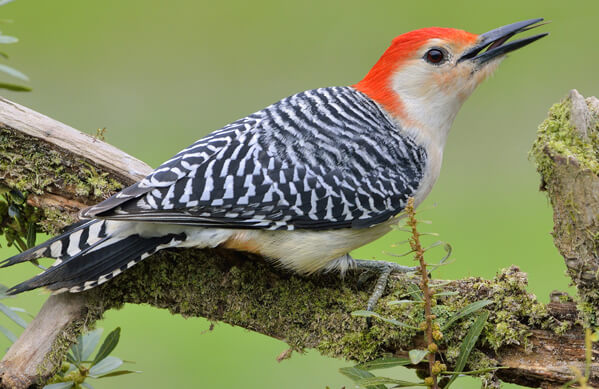Woodpeckers in Florida: Natural History, Ecology, and Conservation
Discover the Interesting World of Woodpeckers: Every Little Thing You Required to Know
The world of woodpeckers is a world filled up with distinct actions, complex adaptations, and a varied variety of species. From their environments and distribution patterns to their feeding habits and specialized physiological features, woodpeckers have actually long mesmerized the interest of ornithologists and nature lovers alike. Understanding the details of these interesting birds provides a look into the complicated interplay in between their biology and the environment. As we check out the world of woodpeckers additionally, we uncover a wide range of information that clarifies their significance in ecological communities and the difficulties they encounter in an ever-changing world.
Woodpecker Habitats and Distribution
Woodpeckers populate a varied array of environments worldwide, showcasing adaptability in their distribution patterns. These resilient birds are discovered in forests, timberlands, savannas, and deserts across numerous continents, demonstrating their capability to grow in various weather conditions. In The United States and Canada, for instance, woodpeckers can be detected in both coniferous and deciduous forests, utilizing their strong beaks to forage for insects and develop nesting dental caries in trees. Likewise, in Africa, certain woodpecker varieties have adjusted to arid atmospheres, such as the acacia forests, where they play an essential duty in controlling insect populations.

Feeding Behaviors and Diet
Amongst the various aspects of their actions, woodpeckers display distinctive feeding habits and dietary choices. These birds are mostly insectivores, with a diet regimen that consists of ants, beetles, caterpillars, and other bugs found in trees. Woodpeckers use their strong beaks to pierce right into the bark of trees, penetrating for pests and larvae hidden underneath the surface. In enhancement to bugs, woodpeckers also consume nuts, seeds, fruits, and sap. Some varieties have specialized tongues with barbed pointers that help them draw out bugs from gaps in timber.
Woodpeckers are recognized for their drumming behavior, which serves not just to communicate with other woodpeckers yet additionally to situate food. The fast drumming sound is produced by the bird pecking on powerful surface areas like More hints dead trees or steel posts. This behavior can bring in bugs concealed in the wood, enabling the woodpecker to discover their existence and feed on them.
Special Adaptations for Tree Climbing
In their skilled quest of bugs concealed within go to website tree bark, woodpeckers have actually progressed amazing physiological functions that equip them with distinct adjustments for effective tree climbing. Woodpeckers have strong neck muscles and an unique skull structure that take in the effect of consistent pecking, enabling them to climb up and down without causing injury to their brains. These adjustments showcase the unbelievable transformative style that enables woodpeckers to browse trees with precision and effectiveness.
Diverse Woodpecker Variety Worldwide
With over 200 different types spread across various environments worldwide, the family of Picidae includes an exceptional diversity of woodpeckers. These birds can be located in woodlands, timberlands, savannas, and also urban areas, showcasing their versatility to various environments. From the famous Northern Flicker in North America to the vivid and evasive Crimson-backed Flameback in Asia, each woodpecker varieties displays distinct qualities in terms of tuft, habits, and habitat choice.
Woodpeckers vary substantially in size, with the petite Downy Woodpecker determining around 6-7 inches in length, while the effective Lineated Woodpecker can reach up to 17 inches - Woodpeckers in Florida. Their beaks additionally are available in different forms and dimensions, showing their feeding behaviors. Some types specialize in drawing out bugs from tree bark, like the Acorn Woodpecker, while others, such as the Black-cheeked Woodpecker, prey on fruits and seeds

Conservation Efforts and Challenges
Conservation initiatives for woodpecker populaces are critical in reducing the effect of habitat loss and other dangers facing these diverse bird varieties. Woodpeckers face various difficulties to their survival, primarily due to logging, urbanization, environment modification, and intrusive species. To deal with these concerns, conservation efforts focus on shielding and recovering woodpecker environments, executing sustainable forestry practices, and elevating recognition concerning the value of these birds in ecological communities.
One significant see this challenge in woodpecker preservation is the fragmentation of their habitats, resulting in isolated populaces that are more prone to termination - Woodpeckers in Florida. Guardians work to create wildlife passages and secured locations that attach these fragmented habitats, permitting woodpeckers to relocate in between various areas for feeding, breeding, and sanctuary
/https://tf-cmsv2-smithsonianmag-media.s3.amazonaws.com/filer_public/30/ac/30acf469-09cd-4fcc-a812-1aa30f477578/aprmay2024_l09_woodpeckers.jpg)
Conclusion
In verdict, woodpeckers are remarkable birds with unique adjustments for tree climbing and feeding actions. Additional research study and conservation actions are needed to guarantee the survival of woodpeckers in the wild.